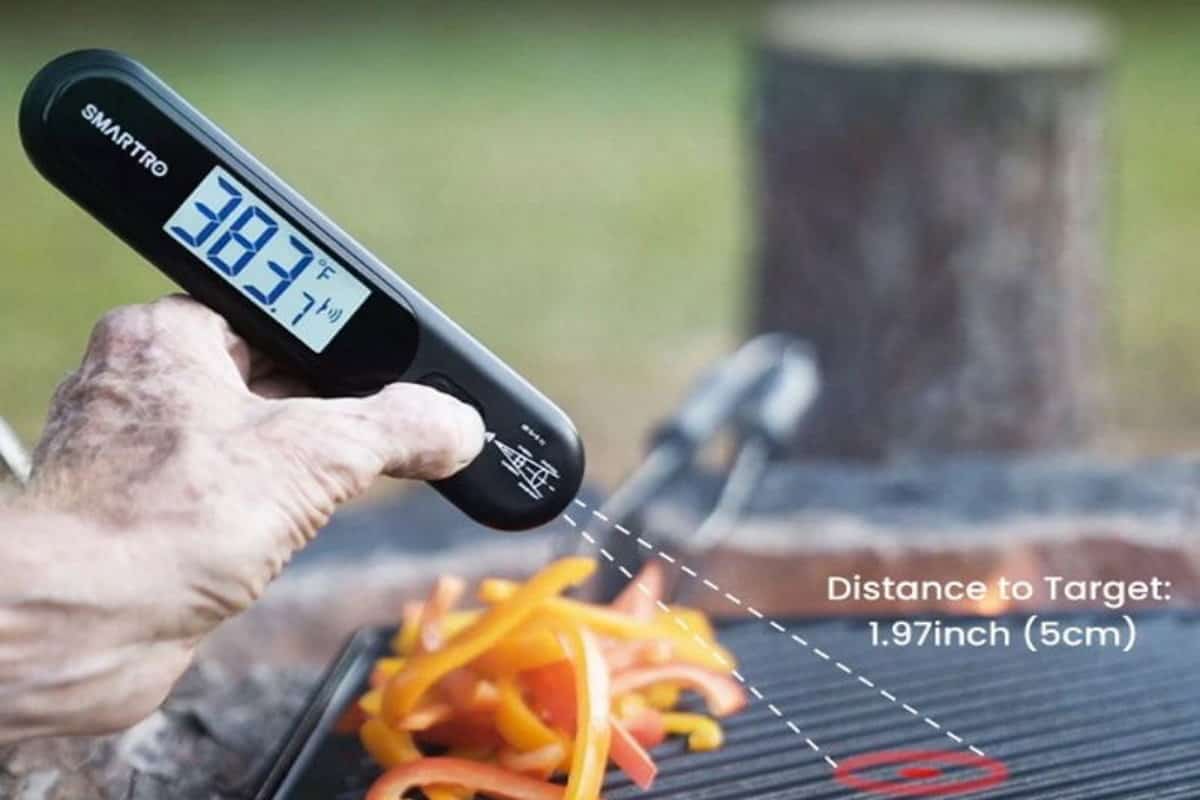
What You Need to Know About Infrared Thermometer Sensors
Infrared thermometers bring a lot of convenience to the kitchen. They are effortless and straightforward to use. The temperature reading process starts from the lens in the thermometer that focuses infrared energy to the detector, converts that energy into an electrical signal, and then displays that into a temperature unit. This process is completed in a second or two, making infrared thermometers extraordinarily efficient and convenient in the kitchen.
The reliability of infrared thermometer sensors makes it possible to achieve multiple functionalities from this handy tool.
Table of Contents
When should I use infrared thermometers?
Infrared thermometers are specifically designed to measure temperature in applications and circumstances where you cannot use the conventional thermometer. Examples include moving objects (conveyor belts, machinery, rollers, etc.) or when a non-contact temperature reading is needed. The latter is relevant to avoid contamination or for safety reasons (high voltage, extremely high temperatures if placing the thermometer sensors physically).
In the case of the kitchen, infrared thermometers can help you control the temperature of the food and the cooking process. While many things go into cooking, from the ingredients used to techniques and preferences, it is essentially about temperature control. Incidentally, temperature control is the most critical factor in keeping food safe for consumption.
Pathogenic microorganisms found in food grow and multiply rapidly in mid-range temperatures. But they expand slowly at low temperatures. Moreover, most can be killed at extremely high temperatures (cooking). Thus, for safety, food must be held and stored at cold temperatures (we have refrigerators and freezers) and must be cooked thoroughly to avoid foodborne diseases. This is where the benefits of kitchen thermometers come into the picture. Of all the kitchen thermometers out there, infrared thermometers are the most unique in their application and use.
An infrared thermometer sensor will let you stand and measure temperature from a safe distance and give you accurate and quick temperature readings.

Quick and easy to use
Other food thermometers require you to handle both the food and the prong of the thermometer at the same time. You will need to place the prong inside the food to get a temperature reading. And to clean the thermometer and avoid contamination, you will have to clean the thermometer as soon as possible.
On the other hand, infrared thermometers are handheld devices specifically designed for quick and easy operation. Point it to the specific object, press its trigger, and read the digits displayed on a digital screen. That’s it.
Helps avoid Contamination
Since you are simply pointing the device from a distance, you don’t cross-contaminate different food ingredients in your kitchen while measuring their temperature. An infrared thermometer lets you measure the temperature of multiple foods, ingredients, and cooking equipment quickly and easily without making physical contact with any of them.
Maintain your food’s pristine look
Traditional kitchen and meat thermometers require you to poke your food with prongs to measure its temperature. This, of course, leaves a hole in your food. While it will not affect the taste, it can affect the presentation of your food.

Other uses of infrared thermometers in the kitchen:
- Check oven temperature – while built-in oven thermometers provide temperature readings, their accuracy deteriorates over time, resulting in inaccurate temperature displays. Point your infrared thermometer sensor to determine whether your oven is ready. You can also use this thermometer to ensure that your pizza (dough and topping) is cooked thoroughly.
- Check freezer and refrigerator temperature – built-in dials in these appliances don’t accurately provide temperature readings.
- Food and beverage temperature – restaurant owners must keep food in buffet lines at 140˚ F or hotter to ensure safety. You can use an infrared thermometer to adjust your slow cookers and warming trays accordingly.
Limitations of Infrared Thermometer Sensors
Cannot determine doneness
Kitchen thermometers remove the guesswork from cooking; it is the most reliable tool to ensure the safety and doneness of most types of food. In most cases, you must cook food items at a temperature high enough to kill harmful bacteria. For the aspect of “doneness”, on the other hand, you cook food to your desired taste (appearance, texture, juiciness, etc.). In this case, you need to use the conventional meat thermometer and NOT your infrared thermometer. Why? As said earlier, infrared thermometers read the surface temperature of the food and not the internal temperature.
Many home cooks depend on the visible indicators (color changes) of the food in their cooking. However, appearance and color are not reliable indicators for either safety or doneness of the food. A food thermometer is still the most accurate tool to determine the two, as it is the only tool you can use to tell if harmful bacteria within the food have been destroyed.
While doneness is primarily subjective, food safety experts emphasize the importance of increasing internal temperature up to a certain point (different types of food have different internal temperature requirements) to ensure the destruction of harmful pathogens. Thus, you must only use visual indicators for doneness after the food has reached its safe internal temperature.
Poultry, for example, should reach an internal temperature of 165˚ F for a minimum of 15 seconds to be safe for consumption. A hamburger patty should reach at least 155˚ F for 15 seconds to be safe. This is where you need traditional meat thermometers.
Not ideal for boiling water and other liquids
Again, infrared thermometer sensors read the surface temperature of a specific object. In the case of boiling water, it will simply measure the temperature of the steam.
Moreover, to avoid mistakes when measuring the temperature of liquid food, such as soups, make sure to stir the pot first so you can have an even temperature in your pot.
Not for shiny steel pans
Infrared thermometers cannot provide accurate temperature readings on shiny steel pans. They are, however, ideal for skillets, cast iron, and regular baking pans.
Things to Consider Before Buying an Infrared Thermometer for your Kitchen
Accuracy – Measurement accuracy refers to the closeness of the device’s measurement to a specific value. The thermometer’s accuracy is displayed on the spec sheet or packaging (+/- set amount).
Range – Range refers to the distance from which the infrared thermometer can provide an accurate temperature reading (minimum and maximum temperatures given). It is shown on the spec sheet or the packaging of the product.
Adjustable Emissivity – Emissivity is how efficiently the object’s surface can emit energy. Emissivity for infrared radiation is measured from 0 to 1. Most everyday objects have an emissivity of 0.95, and you will find this default setting for most infrared thermometers.
Discover Other ChefsTemp Products
Discover more recipes and learn kitchen tricks by joining our cooking family on Facebook.
You may also like:















